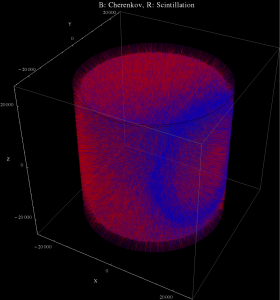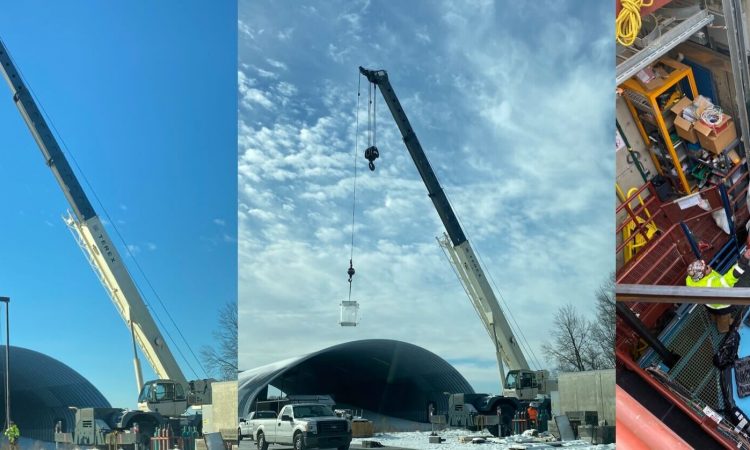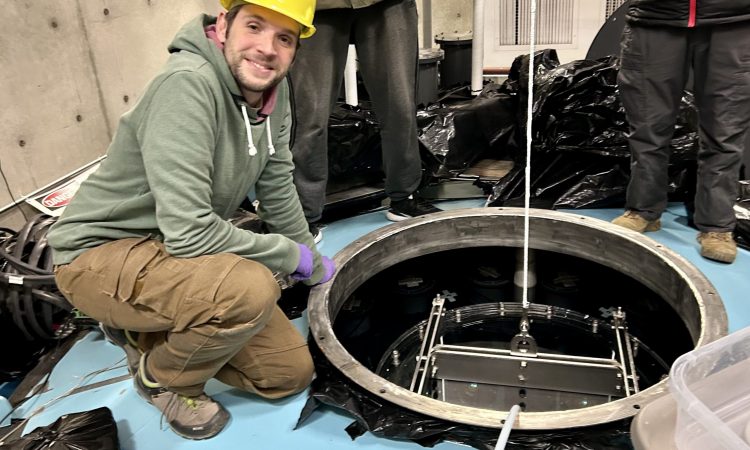Water-based Liquid Scintillator (WbLS)
ANNIE is investigating WbLS as a novel target material for enhanced event reconstruction of GeV neutrinos. WbLS is optimized for the co-detection of Cherenkov and scintillation signals. Small droplets (micelles) of organic scintillator with a hull of surfactant molecules are suspended in water that serves as the bulk material. While regular organic scintillator absorbs most of the Cherenkov spectrum, WbLS with a large water fraction (99%) is very transparent so that a large fraction of the Cherenkov photons can reach the photo sensors unimpeded.

Adding the scintillation signal means that particles below the Cherenkov threshold can be detected, which means that low-energy protons and other hadrons emitted at the neutrino interaction vertex become visible. This will improve both the energy and the spatial reconstruction of the neutrino reaction. The Cherenkov cone can be discriminated from the isotropically emitted scintillation photons based on the angular distribution of photons detected. Moreover, the early Cherenkov photons can be distinguished from the scintillation photons that are emitted with several nanoseconds delay. Therefore, ANNIE is an ideal test bed for the novel technique: WbLS can be used as a target medium in the center of the detector tank while the PMTs and crucially the ultra-fast LAPPDs can be used to discriminate Cherenkov and scintillation signals.In spring 2023, we suspended a small volume (365 kg) of WbLS in a cylindrical acrylic vessel dubbed SANDI in the detector center.
During the 2-month measurement with SANDI, we detected hundreds of neutrino interactions and Michel electrons from muon decay within the WbLS volume. Based on this data, we were able to establish the clear presence of a scintillation signal (on top of the Cherenkov cone) and estimate the scintillation light output to about 80% of the Cherenkov intensity. A further test run with gadolinium-loaded WbLS in SANDI is planned for 2024, while a year-long data run with a substantially larger WbL-filled vessel that takes up the entire detection volume is foreseen for 2026.






